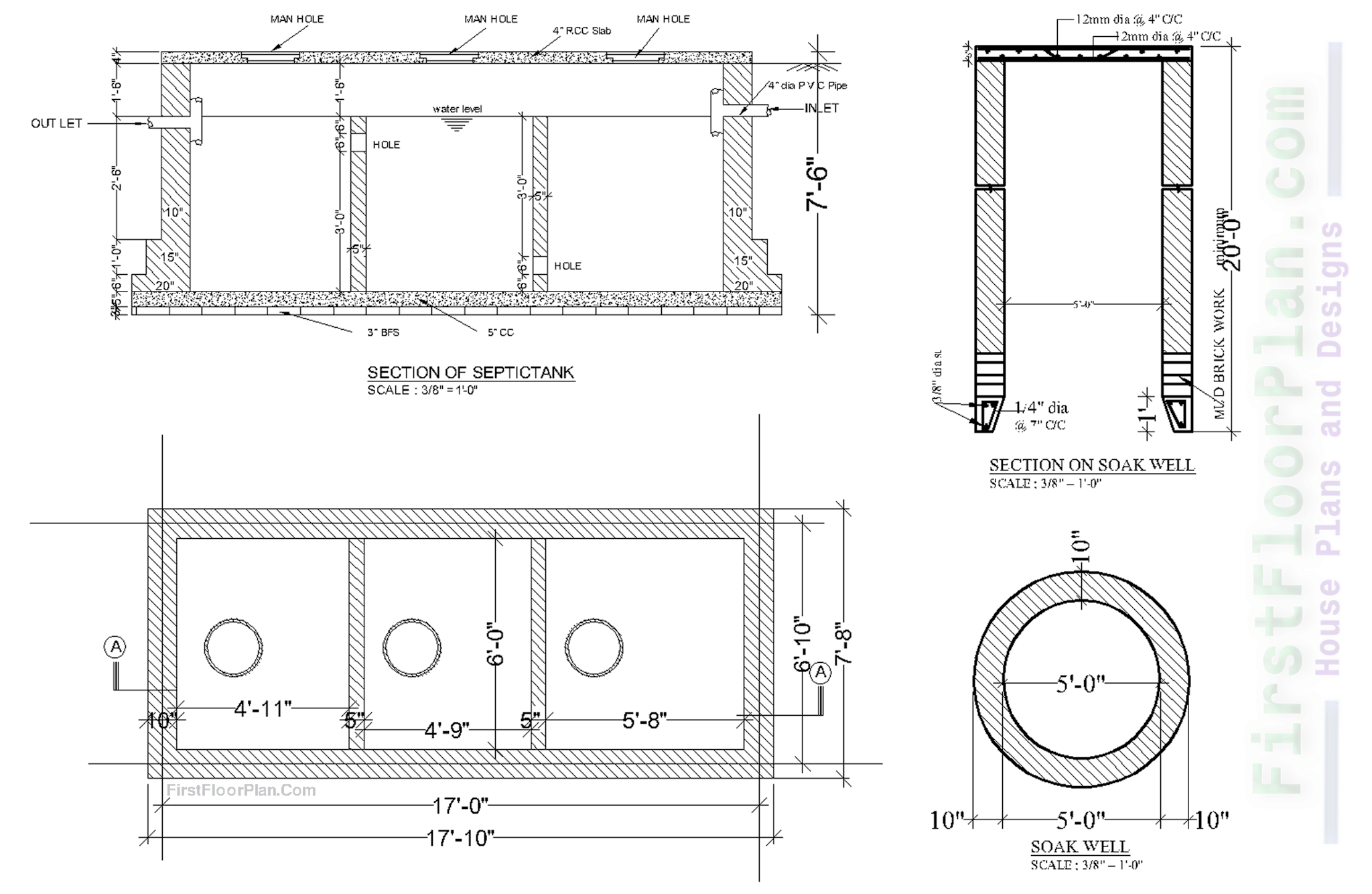
Details of Septic Tank and Soak Pit with AutoCAD drawing File RUANGSIPIL
First, excavation takes place to create a space for the septic tank and drainfield. The size and depth of the excavation are determined by the system's design, property layout, and soil characteristics. The septic tank is then carefully positioned and installed according to the design specifications.
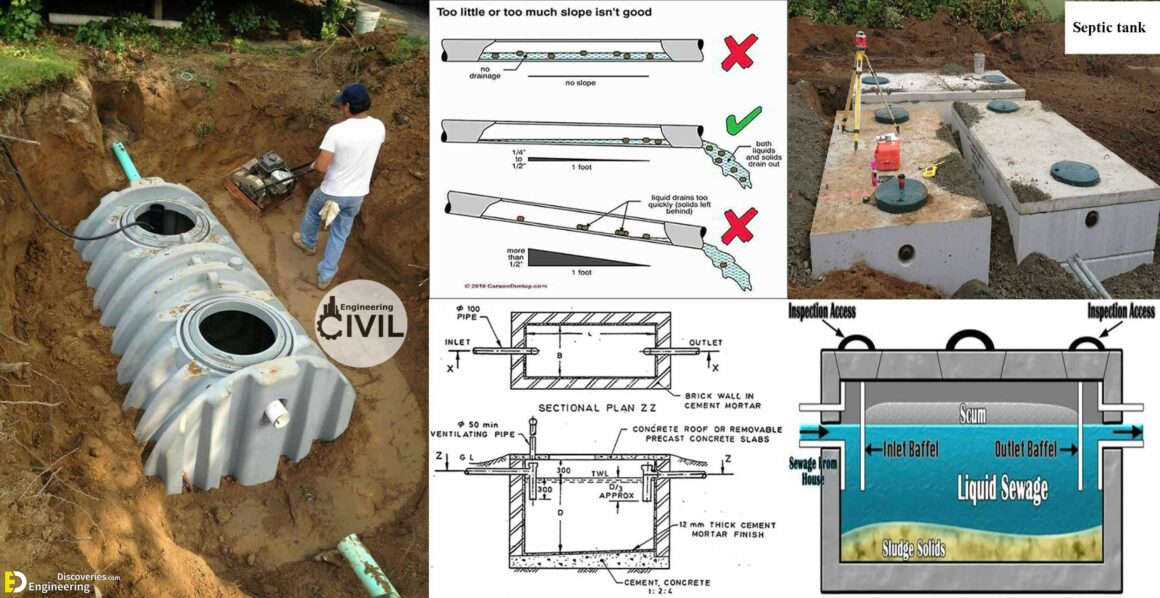
Septic Tank Components And Design Of Septic Tank Based On Number Of Persons Engineering
DOH Administrative Order No. 2019-0047: National Standard on the Design, Construction, Operation and Maintenance of Septic Tank Systems. Catherine Joaquin 2019, Department of Health

Standard Septic Tank Size For 4 Bedroom House
June 21, 2023 Septic tanks are an essential component of many residential and commercial properties, providing an effective and eco-friendly way to manage wastewater. Understanding the standard septic tank design is crucial for homeowners, builders, and anyone involved in the construction industry.

How To Design A Septic Tank Engineering Discoveries
Cluster / Community System Septic Tank A septic tank is a buried, watertight tank designated and constructed to receive and partially treat raw domestic sanitary wastewater. Heavy solids settle to the bottom of the tank while greases and lighter solids float to the top.
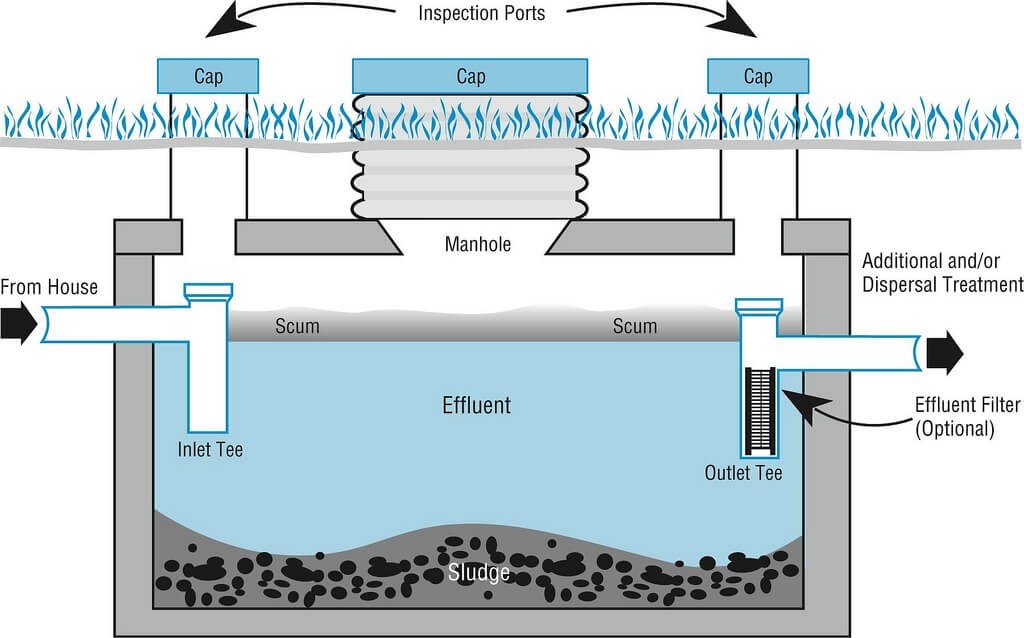
SEPTIC TANK PUMPING BEND CENTRAL OREGON SERVICES SEPTIC SYSTEMS GREASE TRAP
DESIGN AND CONSTRUCTION STANDARDS FOR SEPTIC TANKS, SOIL ABSORPTION SYSTEMS, AND OTHER SMALL WASTEWATER SYSTEMS Section 1. Authority. This regulation is promulgated pursuant to the Wyoming Administrative Procedures Act, W.S. 16-3-101 et seq.; the Wyoming Environmental Quality Act, W.S. 35-11-101 through W.S. 35-11-2004; and W.S.
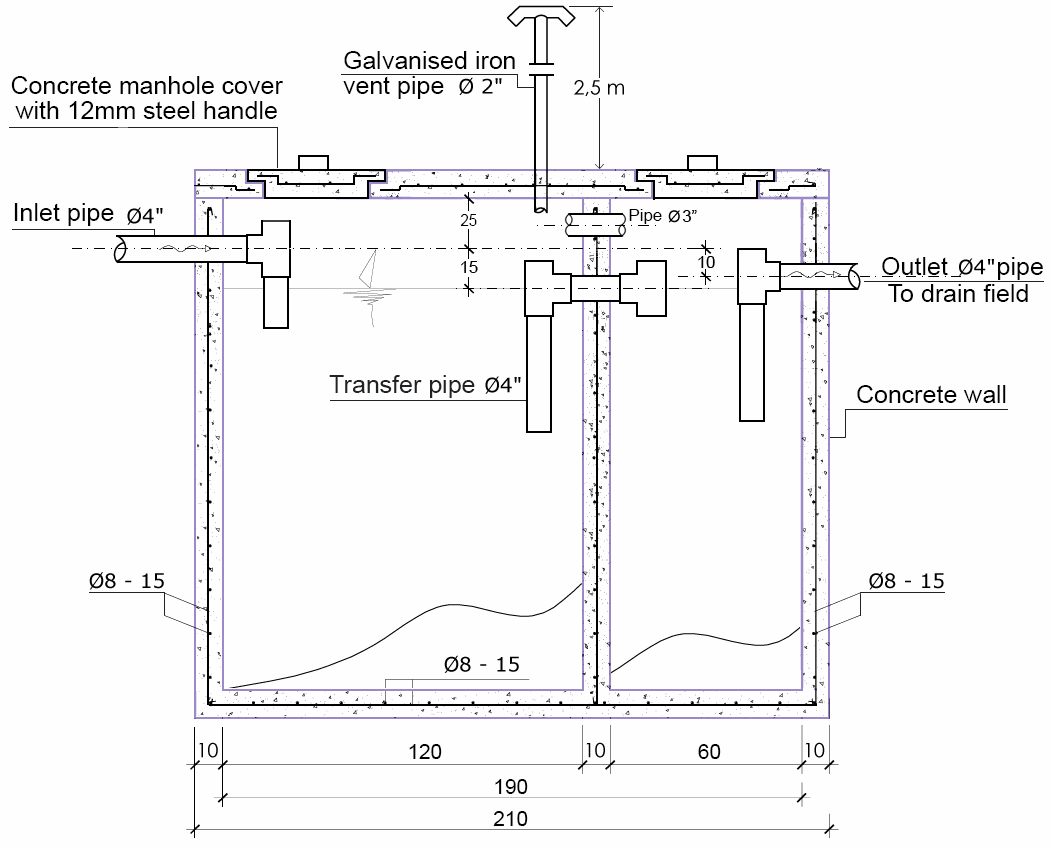
How To Build A Septic Tank
March 12, 2021 HPD Construction Posted in Septic Tank Septic Tank Design Details | Septic Tank Design 3 Chambers | How to Build a Septic Tank Concrete Septic Tank Design | Septic Tank Construction Drawings |Types of Septic Tank Designs | Advantages and Disadvantages of Septic Tank Definition of Septic Tank
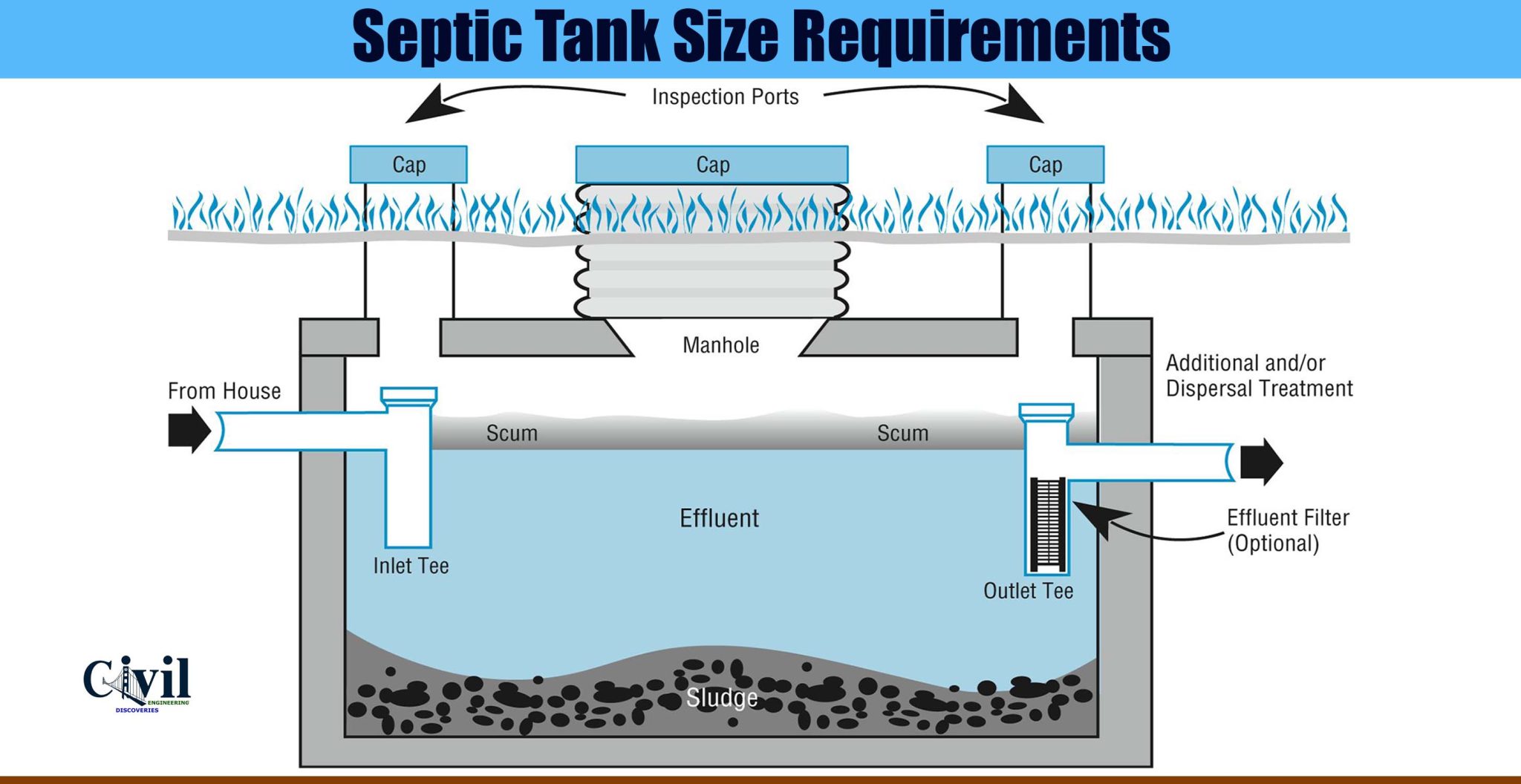
Septic Tank Size Requirements Engineering Discoveries
Your Water Usage The most effective way to determine the septic tank you need for your home is to calculate your water usage. The septic tank size you need depends on the volume of water it can hold. In the United States, the minimum septic tank size permitted is 1,000 gallons.
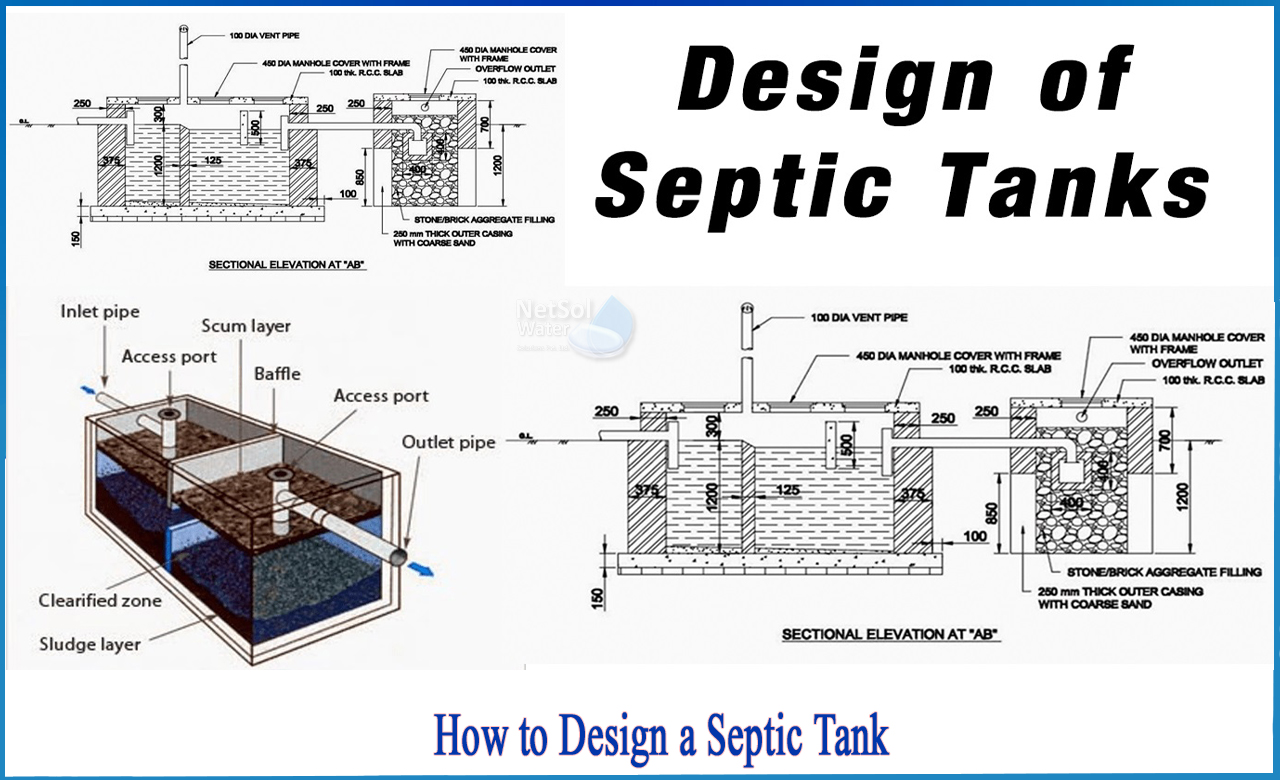
How to design a septic tank Netsol Water
The volume in cubic feet of a tank of these tank dimensions is 4.5 x 8 x 6 = 216 cubic feet. Since one cubic foot can contain 7.481 gallons, which we round up to 7.5 gallons per cubic foot: 216 x 7.5 = 1620 gallons of septic tank capacity - this is probably nominally a "1500-gallon septic tank".

Septic Tank Section View Civilology
The standard septic tanks will be 4.5 feet or 54 inches wide, with a length of 8 feet or 96 inches and a height of 6 feet or 72 inches. Most tanks have a water capacity of 1000 to 1500 gallons. Rectangular Tank Measurement Chart Circular Tank Sizing How Many Gallons Is A Standard Septic Tank?

Septic Tank Size Requirements And All Details You Want To Know It ! Engineering Discoveries
For the Septic tank design, the depth of the tank should not be less than 1.8m. Take sludge settled down per person - 30 liters/year. So here we take sludge removal 2 years once. Total Accumulated Sludge = 30 litres x 5 persons x 2 years = 300 Litres Total Septic Tank Capacity = 2000+300 = 2300 Liters
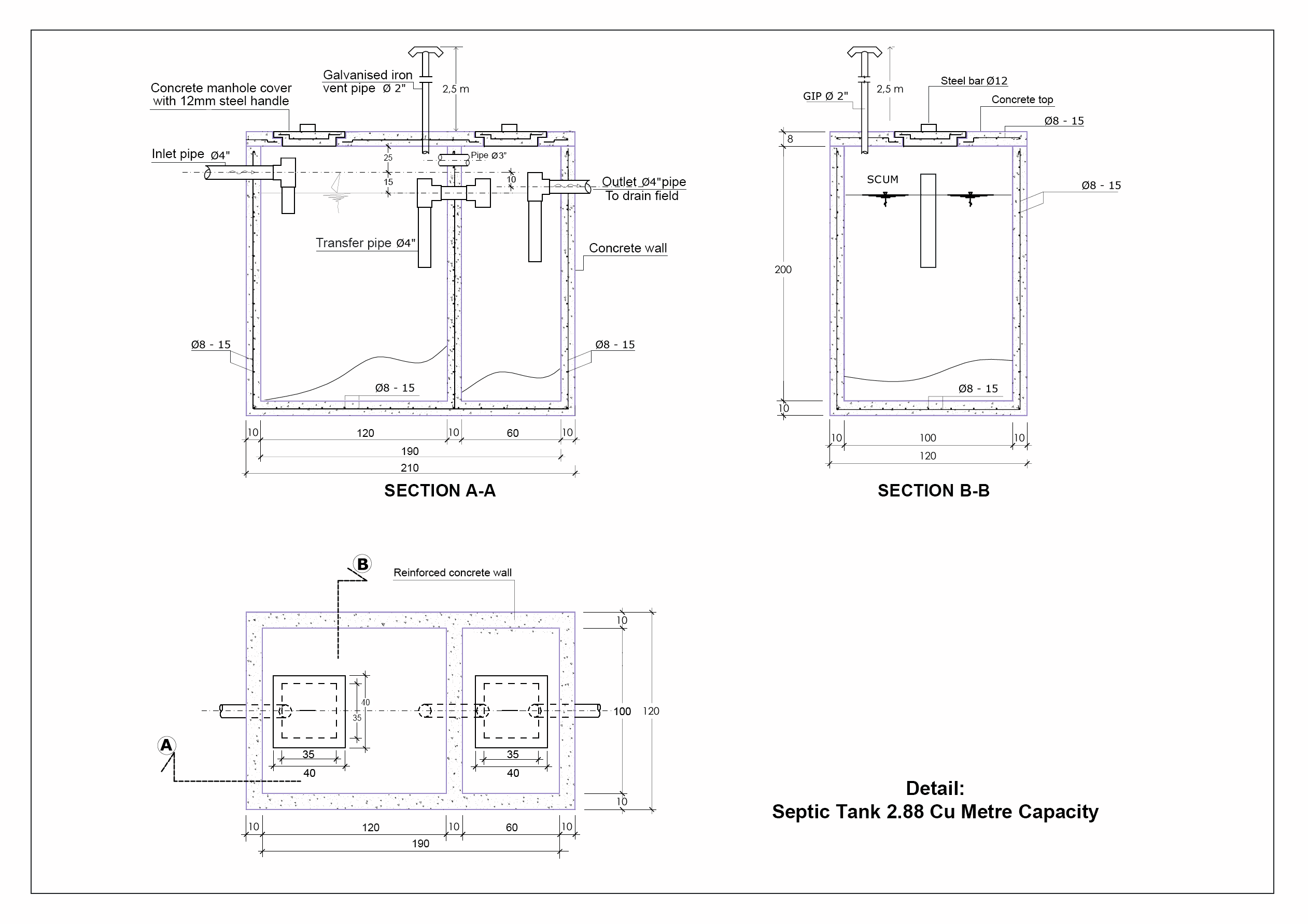
Septic Tank Design and Construction
Standard septic tank size for 4, 5, 6, 10, 15, 20, 25 and 50 users Septic tank is scientifically well designed underground rcc concrete structure used for primary treatment of liquid wastage faecal material and urine into settleable solid or semi solid sludge.
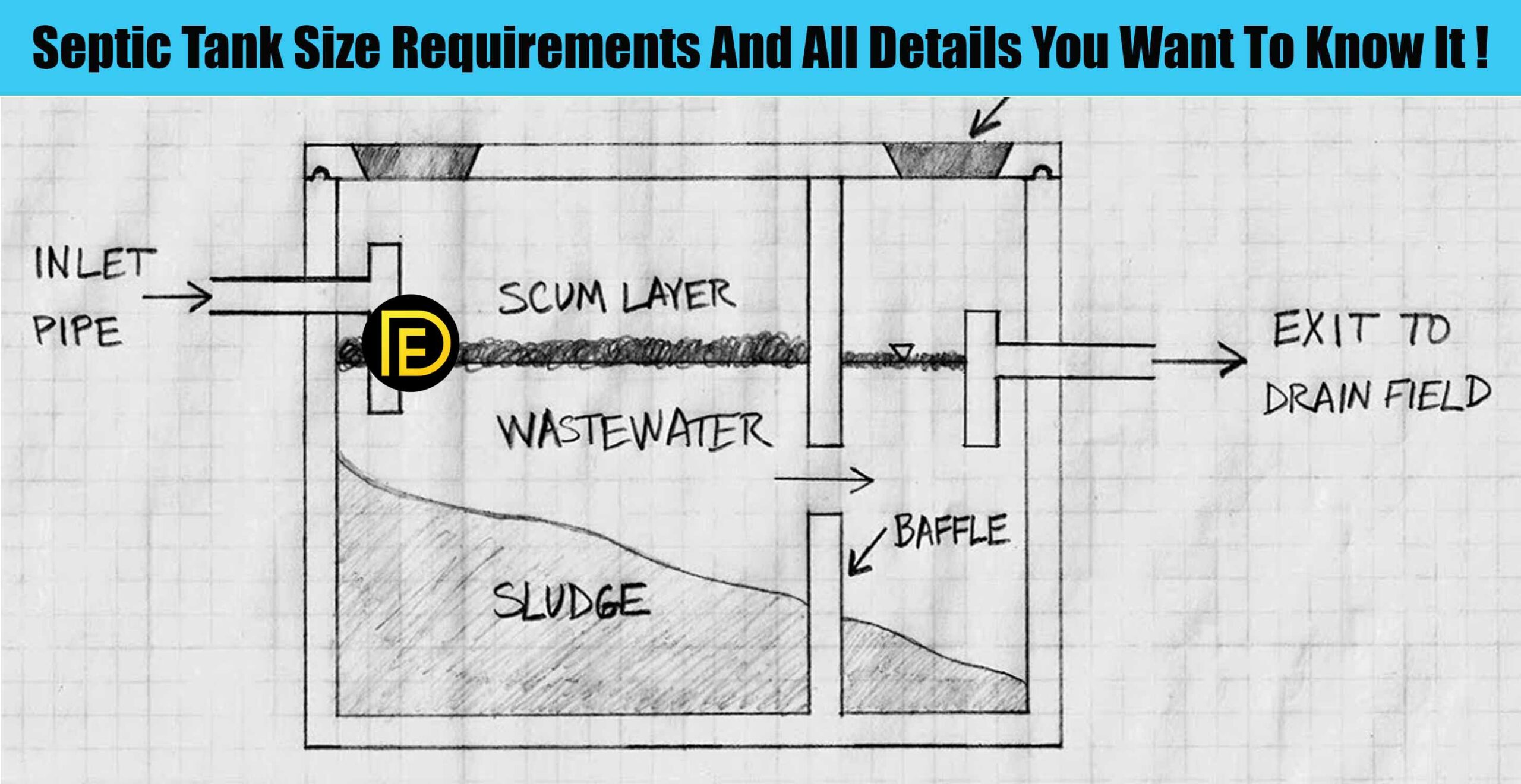
Septic Tank Size Requirements And All Details You Want To Know It ! Daily Engineering
The standard height (D) of septic tank should be taken as 5 feet 9 inches or 5.75 feet. The thickness of exterior walls should be 9 inches or 0.75 feet. The thickness of interior walls should be 4.5 inches or 0.375 feet. The ratio of PCC is taken as 1:2:4 with 4 inches thickness. The ratio of RCC slab is taken as 1:2:4 with 5 inches thickness.

Septic Tank design All you need to Know about Septic Tank
Septic system images and sketches useful in understanding testing, diagnosis, pumping, repair design, defects, alternatives, inspection methods Defects in onsite waste disposal systems, septic tank problems, septic drainfield problems, checklists of system components and things to ask.Septic system maintenance and pumping schedules.

Brick Septic Tank Arkitrek Open Source Design Drawings
This septic system design article outlines basic septic system design parameters such as finding the recommended septic tank volume and conventional recommended onsite wastewater soil absorption system (leach field or drainfield) size, along with some notes on how to calculate these from simple water usage and site conditions.
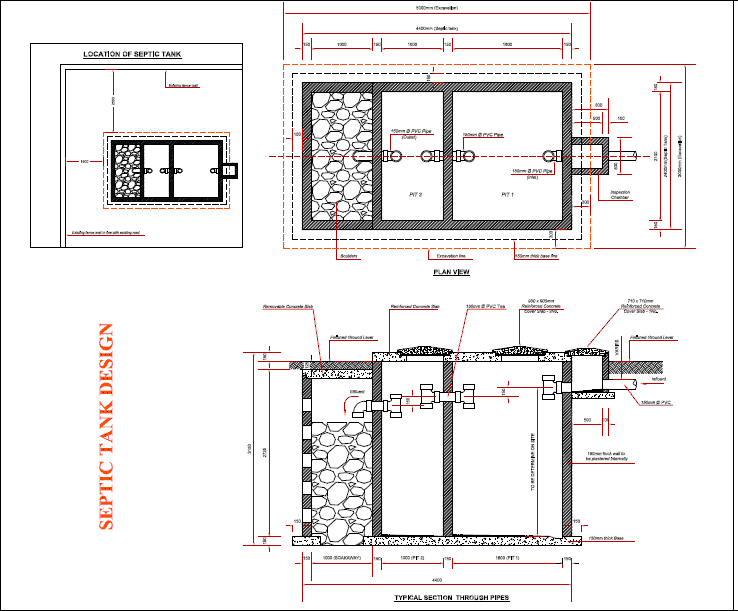
Septic tank in PDF CAD download (194.71 KB) Bibliocad
After installation, all septic tanks shall be able to support at least 300 pounds per square foot (psf). (iv) Tanks with a liquid depth of 48 inches or more. shall have a top opening with a minimum of 20 inches in the shortest dimension to allow entry into the tank. Tanks with a liquid depth less than 48 inches shall have a top opening that is.

SEPTIC TANK DESIGN Engineering Feed
Design of Septic Tank. The capacity of septic tank depends on number of users and interval of sludge removal. Normally sludge should be removed every 2 years. The liquid capacity of tank is taken as 130 liters to 70 liters per head. For small number of users 130ltr per head is taken. A septic tank is usually provided with brick wall in which.